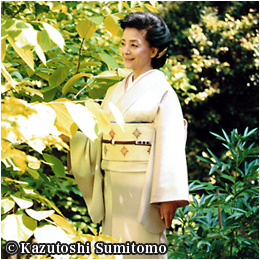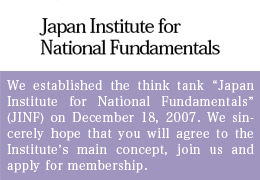Voices of Healthcare Experts Must Be Heeded to Thwart Health Hazards Resulting from Nuclear Disaster
As of May 10, small numbers of evacuees have been allowed to make brief visits to their homes in the no-entry zone areas within 20 kilometers of the crippled nuclear power plant in Fukushima Prefecture. The purpose of the visits, approved by the Japanese government on May 6, is to gather important documents and supplies left behind when residents in the prefecture’s nine municipalities were forced to flee their homes after a series of explosions at the power plant, triggered by the devastating earthquake and tsunami that hit northeast Japan on March 11.
More than two months after the disaster, those still confined to evacuation centers across Fukushima prefecture number approximately 78,000, representing some 26,000 households. Life at these centers has been tough, especially on elderly evacuees. Sadly, not a small number of them have passed away, with many showing aggravated symptoms of dementia. Deprived of cattle and paddies, farmers in the prime of their lives have not been able to go to work. Insecure and depressed about the prospects for their future, the evacuees reacted with spontaneous cheers and joy to the government decision to allow them short home visits. Obviously, the government felt visits to the contaminated zones would not be physically harmful, if they are short enough.
However, one wonders what level of accumulated radiation dosages is really hazardous to human health. How strictly should the tough standards of the government and the International Commission on Radiological Protection (ICRP) be enforced?
Ken Yamaguchi, President of the Shizuoka Cancer Center, who has for years dealt with radiation as a medical oncologist, proposes a new way of thinking at this juncture where a large number of Fukushima residents have actually already been exposed to an equivalent of more than 1 millisievert of radiation a year – the standard set for ordinary Japanese living under ordinary circumstances. Yamaguchi stresses the importance of allowing the evacuees to return to their own habitats, releasing them from the tough living conditions at the evacuation centers which have given rise to a host of problems – physical and mental. For that purpose, emphasizes Yamaguchi, authorities must grasp as precisely as possible the extent of accumulated radiation dosage on the part of individual evacuees, conduct stringent health management programs for them, and do everything possible to prevent harm to their health.
According to Yamaguchi, the idea of allowing the evacuees to return and live in their old homes in the designated no entry zones – which the evacuees are this time finally permitted to enter heavily guarded by white protective suites, goggles, and double-layered gloves – originates from the knowledge and expertise nurtured at the frontline of radiotherapy provided cancer and Basedow’s disease patients.
Barely a century after mankind began possessing knowledge about radiation through the work of Madame Marie Curie, the analysis of the real effects of radiation on human health still remains mostly in the realm of guess work. The only thing certain is that exposure to more than 100 millisieverts of radioactive dosage a year results in a high possibility of health hazards. Despite this, the maximum permissible dosage for average citizens is set at 3.4 millisieverts a year – only 1 millisieverts higher than the 2.4 millisieverts that ordinary citizens are subject to from natural radiation exposure. In Yamaguchi’s opinion, this stringent standard – in which one would not reach the dangerous level of 100 millisieverts on an accumulated basis even at the age of 100 – reflects the innate human tendency to be cautious about unfamiliar phenomena.
A Logical Contradiction
Meanwhile, the ICRP proposes “no more than 100 millisieverts in five years, i.e., a yearly average of 20 millisieverts, or no more than 50 millisieverts per year” as the standard of maximum permissible dose of radiation for doctors and technicians routinely handling radiation at hospitals, as well as those engaged in nuclear power plant operations.
“So long as exposure is confined to this range, I do not believe there is any chance of health hazards,” declares Yamaguchi, explaining:
“The standard ceiling for the average citizen – of 1 millisiervert a year – should continue to be maintained from now on as an absolute yardstick to prevent health hazards. This standard is especially important for infants, school children and pregnant mothers. Meanwhile, speaking as someone who has long been in practice and witnessed numerous cases, I can say for sure that the present standards set for doctors and those dealing with radiation are absolutely safe for those above the 40- to 50-year-old brackets, so long as the individual amount of exposure is strictly checked and managed. The question, then, is how to cope with such an emergency as we are faced with now, based on this understanding. Considering the possibilities of the health hazards resulting from evacuation as well as those resulting from radiation exposure, I would consider it most appropriate to abide by the recommendations of the ICRP regarding emergency measures and raise the ceiling further for average adult citizens.”
Yamaguchi points out that the safety standards set by the international
community, as well as the state, are legally just but logically contradictory. Because, as he puts it, there clearly exist double standards involving average citizens on the one hand, and doctors and specialists engaged in a broad range of work having to do with radiation on the other.
“Past data shows that the international community takes the view that the cancer rate has not statistically increased when the radiological dosage was held at less than 100 millisieverts,” notes Yamaguchi. “If the dosage goes beyond this level, the cancer rate shows slight signs of increase. Today, statistics indicate that, of 1,000 Japanese, 300 die of cancer. If these 1,000 are all exposed to 100 millisieverts of radiation a year, the number of those who die of cancer will increase by five – to a total of 305. What they are talking about in Fukushima now is 20 millisieverts. I can say for sure that it is a level of exposure that can hardly cause cancer.”
Mankind has long been exposed to radiation attributable to nature, atomic and hydrogen bomb tests, and the radioactive components of medical care. According to a report by the United Nations Committee on the Effects of Atomic Radiation (UNSCEAR) released in 2000, and the ICRP’s 2007 recommendations, the world average of exposure to natural radiation stood at 2.4 millisieverts, but the number for Japan was 1.5 millisieverts. Meanwhile, the figures for a local district of Brazil surpassed the 10 millisievert mark, and went beyond 100 millisieverts for Ramsar, Iran, respectively.
In the medical field, on the other hand, no ceiling is set for the maximum amount of radiation a patient is allowed to be exposed to, the precise amount being determined by physicians according to their needs. For instance, in a chest CT scan, a patient is subject to 6.9 millisieverts, the total amount of radiation exposure exceeding 20 millisieverts if three such scans are conducted within a year. In undergoing a positron emission tomography (PET) scan, a patient is exposed to some 3.5 millisieverts of radiation, and between several millisieverts and more than 10 millisieverts when it comes to a PET/CT scan, in which a patient is exposed to injected radioactive materials for PET and X-ray for CT scan.
There is a test used to diagnose cancer in the thyroid gland, called a scintigram, requiring the patient to take a dose of medicine with a radiation exposure of around 10 millisieverts. In the treatment of Basedow’s disease, a huge amount of iodine 131 – to the tune of several hundred million becquerels – is administered. Following years of observation, however, this treatment has proved safe to use, with no evidence of later radiation damage.
Time to Heed What Medical Experts Have To Say
Explains Yamaguchi: “In medicine, we dare expose patients to huge doses of radiation in order to prevent as well as cure diseases after fully probing the pros and cons of such treatment. Also, as has already been mentioned, we doctors operate under legal and physical environments exposing us to much greater doses of radiation than average citizens. Which doesn’t mean our health is endangered: in fact, we work within a framework which strictly safeguards our health. So, I think it makes a lot of sense for the government to go ahead and change the circumstances which have caused not a few elderly citizens to pass away and forced many farmers in the prime of their lives to abandon work while being subjected to the tough living conditions of temporary evacuation centers. To be specific, the government should adopt a new standard of radiological dosages for evacuees older than the 40- to 50-year-old bracket, raising the ceiling to 20 or to 50 millisieverts a year, which is close to the permissible level recognized for medical experts at work. I consider it desirable for the government to allow the evacuees to get home and live in their old residences if they so desire.”
To make that a reality, Yamaguchi stresses at least three conditions must be met:
(1)All the evacuees returning home must be made to wear a badge indicating its carrier is obligated to gauge and record radiological dosages in and around their homes, carry a radioactive counter regularly, and ascertain the radioactive dosages in their vicinity;
(2)Children and households made up of younger couples will be excluded from such measures; and,
(3)The necessities of life must be amply supplied to such families, while maintaining a high level of security for the residents.
Condition (1) is indispensable in order to strictly manage the health of each and every evacuee, stresses Yamaguchi. The government will be held responsible for managing records of individual radiological dosages, with a medical institute to be set up and the data used for research and the advancement of medicine. If the accumulated dosages reach the ceiling of 20- to 50-millisieverts per year, the individuals will swiftly leave their homes for a change of air, relaxing in a hot-spring outside the region – or going on a vacation trip. The expenses involved can very well be borne by the Tokyo Electric Power Company (TEPCO), which operates the Fukushima nuclear complex, or the government, according to Yamaguchi.
Yamaguchi further explains: “Condition (2) represents a measure worked out in the absence of enough data involving younger people, taking into account the fact that many victims at Chernobyl belonged to the younger generation. Condition (3 ) can be met when a system is created to allow older workers less susceptible to radiation to be assigned to support the residents back from evacuation centers.”
Under the present circumstances, in which no clear standards have been established concerning the effects of radiation on human health, I would consider it sensible to heed the expertise of medical experts who have years of experiences of grappling squarely with numerous cases of radiation damage. They ought to know what they are talking about.
(Translated from “Renaissance Japan” column no. 460 in the May 19, 2011 issue of The Weekly Shincho.)








